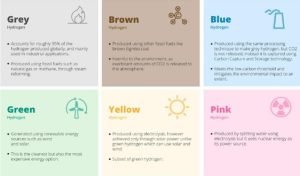1) Missing monuments: The Ministry of Culture recently told Parliamentary Standing Committee that 50 of India’s 3,693 Centrally Protected Monuments (CPM) were missing
- How can a monument go “missing”: Government focus on the social issue rather than heritage: In the decade following the independence, the focus of successive governments was on health, education and infrastructure, rather than protecting heritage, Rapid urbanization, Submergence by reservoir/dams, Difficulties in tracing in remote locations: 24 are untraceable
2) National Green Hydrogen Mission: Ministry of New and Renewable Energy Aims To make India a Global Hub for the production, utilization and export of Green Hydrogen and its derivatives. components of the scheme:
- The Strategic Interventions for Green Hydrogen Transition Programme (SIGHT): Under this, two distinct financial incentive mechanisms will be provided
- Targeting domestic manufacturing of electrolysers and Production of Green Hydrogen
- The Mission will also support pilot projects in emerging end-use sectors and production pathways.
- Regions capable of supporting large-scale production and/or utilization of Hydrogen will be identified and developed as Green Hydrogen Hubs.
- A public-private partnership framework for R&D (Strategic Hydrogen Innovation Partnership – SHIP) will be facilitated under the Mission.
- A coordinated skill development programme will also be undertaken under the Mission.
3) Types of hydrogen:

4) RBI Integrated Ombudsman Scheme:
- It amalgamates three ombudsman schemes of RBI – the banking ombudsman scheme of 2006, the ombudsman scheme for NBFCs of 2018 and the ombudsman scheme of digital transactions of 2019.
- The unified ombudsman scheme will provide redress of customer complaints involving deficiency in services rendered by RBI-regulated entities banks, NBFCs (Non-banking Financial Companies) and pre-paid instrument players if the grievance is not resolved to the satisfaction of the customers or not replied within a period of 30 days by the regulated entity.
5) Heat Dome: Recently, Several parts of Europe witnessed an unprecedented winter heat wave and experts said that temperatures increased 10 to 20 degrees Celsius above normal.
- A heat dome occurs when an area of high-pressure traps warm air over a region, for an extended period. The longer that air remains trapped, the more the sun works to heat the air, producing warmer conditions with every passing day.
- The heat dome’s formation is related to the behaviour of the jet stream; an area of fast-moving air high in the atmosphere.
- The jet stream is believed to have a wave-like pattern that keeps moving from north to south and then north again.
- When these waves get bigger, they move slowly and sometimes can become stationary. This is when a heat dome forms.
